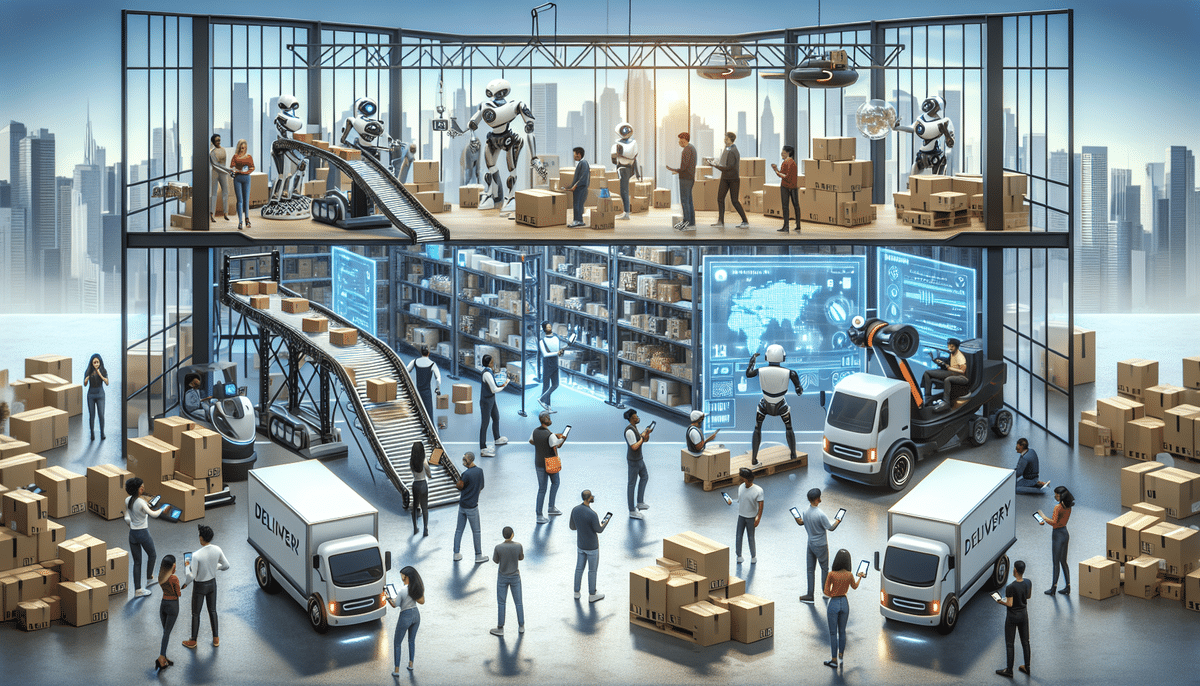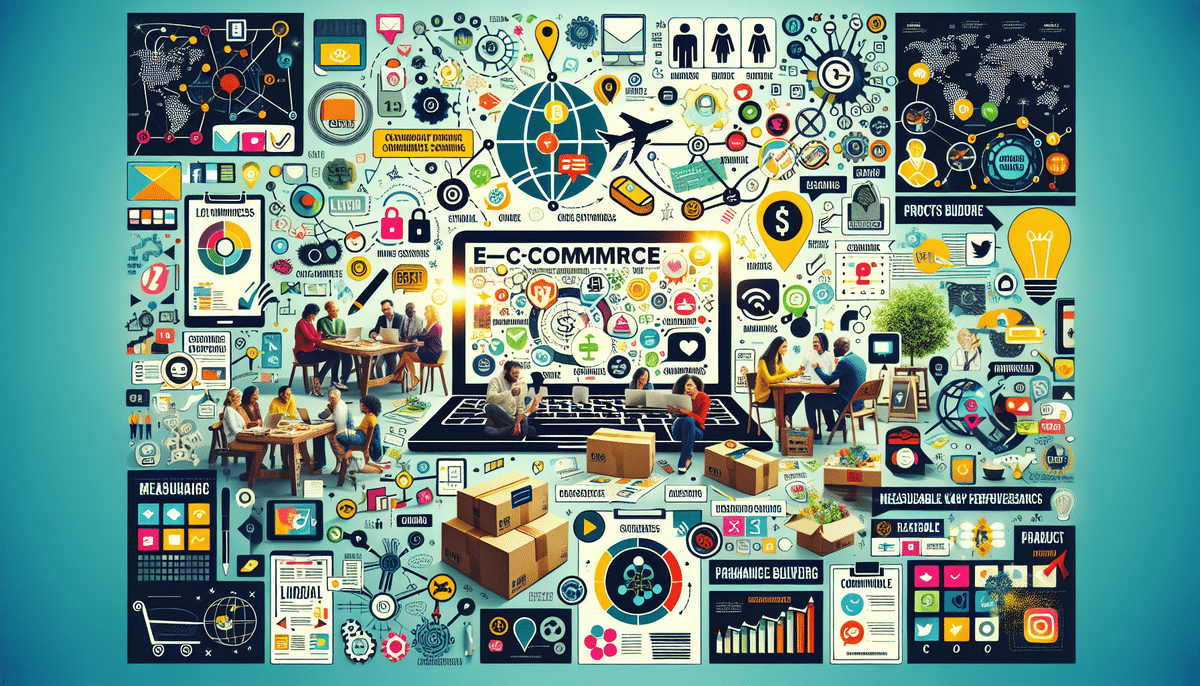Maximizing Efficiency in Retail Deliveries
Retail delivery is a critical component in any retail business, forming a significant part of the overall customer experience and playing a pivotal role in the success of a retail enterprise. According to a 2023 report by eMarketer, 85% of consumers consider efficient delivery as a key factor in their purchasing decisions. Efficient delivery can mean the difference between retaining a customer and losing them to competitors. It can also provide a substantial competitive advantage, helping to reduce costs, boost profits, and enhance brand reputation. This article explores various strategies that retail businesses can implement to maximize delivery efficiency and achieve these objectives.
Streamlining the Retail Delivery Process
The first step to maximizing efficiency in retail deliveries is streamlining the entire delivery process. Retail businesses need to have a clear understanding of all the steps involved in the delivery process, from receiving and sorting orders to dispatching packages and final customer delivery. By reducing the complexity and number of steps involved, businesses can minimize the cost and time of deliveries while still ensuring that customers' needs are met.
Implementing Advanced Technology Solutions
One effective way to streamline the retail delivery process is by implementing technology solutions. For example, businesses can use automated sorting systems to quickly and accurately sort packages, reducing the time and labor required for manual sorting. Additionally, incorporating GPS tracking and real-time delivery updates can provide customers with accurate delivery times and reduce the number of missed deliveries. Technologies such as warehouse management systems (WMS) and transportation management systems (TMS) are instrumental in enhancing operational efficiency.
Optimizing Inventory Management
Another crucial aspect of streamlining the retail delivery process is optimizing inventory management. By accurately tracking inventory levels and forecasting demand, businesses can ensure that they have the right products in stock and ready for delivery. Implementing just-in-time (JIT) inventory systems can help reduce the time and cost of restocking, ensuring that customers receive their orders promptly. According to a Supply Chain Dive report, effective inventory management can decrease operational costs by up to 20%.
The Importance of Efficient Retail Deliveries
Efficient retail deliveries offer numerous benefits, ranging from improved customer experience to significant cost savings and enhanced reputation. First, customers expect timely and reliable deliveries; a business that consistently meets these expectations will earn trust and foster loyalty. According to a Forbes survey, 70% of consumers consider timely delivery a crucial factor in their purchase decisions.
Enhancing Customer Experience
Efficient deliveries lead to faster turnaround times, reducing the number of backlogged orders. This helps businesses meet their fulfillment targets, avoid penalties, and enhance overall performance. Moreover, providing reliable delivery services can increase customer satisfaction, leading to repeat business and positive word-of-mouth referrals.
Cost Savings and Profit Boosts
Streamlined delivery processes can result in significant cost savings by reducing the number of resources required to fulfill orders. Efficient routing, optimized inventory levels, and reduced labor costs contribute to higher profit margins. Additionally, companies can reinvest these savings into other areas of the business, driving further growth.
Environmental Impact
Efficient retail deliveries can also help businesses reduce their carbon footprint. By optimizing delivery routes and utilizing eco-friendly vehicles, companies can minimize their environmental impact. For instance, adopting electric delivery vehicles can reduce greenhouse gas emissions by up to 30%, as highlighted by the EPA.
Reducing Costs and Boosting Profits with Efficient Deliveries
To reduce costs and boost profits through efficient deliveries, businesses must minimize the number of resources required to complete a delivery. This can be achieved through several strategies:
- Optimizing Delivery Routes: Utilizing route optimization software can help identify the most efficient paths, reducing fuel consumption and delivery times.
- Choosing Optimal Delivery Times: Scheduling deliveries during off-peak hours can decrease traffic-related delays and lower fuel costs.
- Consolidating Orders: Combining multiple orders into a single delivery run can reduce the number of trips needed.
Leveraging Diverse Transportation Modes
Businesses can also consider using different modes of transportation, such as bicycles or electric vehicles, to reduce fuel costs and emissions while still meeting delivery targets. According to the U.S. Department of Transportation, utilizing electric vehicles for deliveries can result in lower operating costs and a smaller environmental footprint.
Implementing Real-Time Tracking Systems
Another effective strategy is to implement real-time tracking systems. These systems allow businesses to monitor the progress of deliveries and make necessary adjustments, such as rerouting drivers to avoid traffic or reallocating resources to handle delays. Enhanced visibility and control over delivery operations can significantly improve overall efficiency and reduce the likelihood of costly delays or errors.
Understanding the Challenges of Retail Deliveries
Despite the many benefits of efficient retail deliveries, businesses face several challenges in achieving this objective. Key challenges include rising customer expectations, supply chain complexities, and the increasing demand for faster delivery times.
Addressing Last-Mile Delivery Challenges
One of the biggest challenges in retail deliveries is the issue of last-mile delivery, which refers to the final leg of the delivery process from the distribution center to the customer's doorstep. This stage can be particularly challenging in urban areas due to traffic congestion and limited parking. To address these challenges, some retailers are exploring alternative delivery methods, such as using drones or delivery robots, or partnering with local businesses to offer pickup locations for customers.
Managing Supply Chain Complexities
The complexity of modern supply chains can also hinder delivery efficiency. Factors such as fluctuating demand, inventory inaccuracies, and supplier reliability play significant roles. Implementing integrated supply chain management systems can help mitigate these complexities by providing better visibility and coordination across the entire supply chain.
Adopting Best Practices for Successful Retail Deliveries
Adopting best practices is essential to ensure that businesses can meet their customers' needs while minimizing costs and delivery times. Some of these best practices include:
- Selecting the Right Delivery Partners: Partnering with reliable logistics providers can enhance delivery performance and reliability.
- Investing in the Right Technology: Utilizing advanced delivery management systems can streamline operations and improve efficiency.
- Efficient Inventory Management: Ensuring accurate inventory tracking helps prevent stockouts and overstocking.
- Utilizing Data Analytics: Analyzing delivery performance data can identify areas for improvement and inform strategic decisions.
Enhancing Communication with Customers
Effective communication with customers is a critical aspect of successful retail deliveries. Providing accurate and timely information about delivery status can build trust and foster loyalty. Automated notifications, such as text messages or emails, can keep customers informed about their order's progress and estimated delivery time. Additionally, offering flexible delivery options, such as same-day or next-day delivery, can cater to the evolving needs of customers.
Utilizing Technology to Optimize Retail Delivery Operations
Technology has revolutionized the retail delivery landscape, presenting businesses with numerous opportunities to maximize efficiency. Key technological advancements include:
Robotic Automation
Businesses can use robotic automation in warehouses to sort and package deliveries, significantly reducing the time taken to complete these tasks. According to McKinsey & Company, automation can increase operational efficiency by up to 30%.
Autonomous Delivery Vehicles
Deploying drones or autonomous vehicles can achieve faster and more efficient deliveries, especially in urban areas with high traffic congestion. These technologies not only speed up delivery times but also reduce labor costs in the long run.
Real-Time Tracking and Analytics
The use of real-time tracking and analytics enables businesses to monitor the location and status of their deliveries continuously. This capability allows for the early identification of potential delays or issues, enabling proactive measures to maintain delivery schedules. Additionally, data analytics can help businesses optimize delivery routes and schedules based on historical data and predictive modeling.
Managing Inventory and Fulfillment for Smooth Deliveries
Efficient inventory management and fulfillment processes are critical components of successful retail deliveries. Businesses must ensure that they have the right inventory levels to meet customer demand while avoiding stockouts and overstocks. Additionally, streamlined fulfillment processes, such as picking, packing, and dispatching, are essential for achieving fast and reliable deliveries.
Implementing Real-Time Inventory Tracking
One way to improve inventory management is by implementing an inventory tracking system that provides real-time updates on stock levels. This allows businesses to quickly identify when inventory is running low and reorder before it depletes. It also helps prevent overstocking, which can tie up capital and lead to increased storage costs.
Partnering with Reliable Shipping Carriers
In addition to efficient fulfillment processes, partnering with reliable shipping carriers is crucial for improving delivery times. By choosing carriers with a proven track record of on-time deliveries, businesses can ensure that their customers receive their orders promptly, leading to increased customer satisfaction and repeat business.
Creating a Sustainable Delivery Strategy for Retail Businesses
Sustainability is becoming an increasingly critical consideration for retail businesses, both from a reputation and cost-saving perspective. Creating a sustainable delivery strategy involves adopting environmentally-friendly delivery options, such as electric vehicles and bicycles, as well as minimizing waste and carbon emissions. These sustainable practices not only help businesses meet their environmental commitments but can also result in cost savings over time.
Optimizing Delivery Routes and Schedules
Using data analytics and route planning software can help businesses optimize delivery routes and schedules, reducing the number of delivery trips and miles traveled. This optimization leads to lower fuel consumption and reduced carbon emissions. Additionally, implementing a delivery tracking system that allows customers to monitor their orders in real-time can decrease the likelihood of missed deliveries and the need for re-deliveries.
Adopting Eco-Friendly Delivery Methods
Adopting eco-friendly delivery methods, such as electric vehicles and bicycles, can significantly reduce a company's carbon footprint. According to the International Energy Agency, electric delivery vehicles can reduce carbon emissions by up to 50% compared to traditional gasoline-powered vehicles.
Innovations in Last-Mile Delivery for Improved Efficiency and Customer Satisfaction
Last-mile delivery refers to the final stage of the supply chain, where a package is delivered to the customer's door. This stage can be costly, complex, and time-consuming, but numerous innovations can help improve efficiency and customer satisfaction.
Locker Pickup Points
Implementing locker pickup points allows customers to collect their packages at their convenience, reducing the chances of missed deliveries and lowering delivery costs. Companies like Amazon have successfully implemented locker systems to enhance their delivery efficiency.
Local Delivery Hubs
Establishing local delivery hubs can help streamline last-mile deliveries by decentralizing distribution centers closer to the end customers. This proximity reduces delivery times and transportation costs.
Click-and-Collect Options
Offering click-and-collect options enables customers to order products online and pick them up from a nearby store or designated pickup location. This method not only improves convenience for customers but also reduces delivery logistics complexity.
Overcoming Obstacles to Achieve Maximum Efficiency in Retail Deliveries
While implementing efficient delivery processes is critical, businesses must also be aware of potential obstacles that can hinder their progress. Key obstacles include staffing and labor shortages, supply chain disruptions, and changing customer demands.
Addressing Staffing and Labor Shortages
Labor shortages, particularly in the logistics sector, can impact delivery efficiency. To mitigate this, businesses can invest in employee training programs, offer competitive wages, and adopt automation technologies to reduce dependency on manual labor.
Mitigating Supply Chain Disruptions
Supply chain disruptions, such as those caused by geopolitical issues or natural disasters, can affect delivery schedules and inventory levels. Developing a resilient supply chain through diversification of suppliers and implementing risk management strategies can help businesses navigate these challenges.
Adapting to Changing Customer Demands
Customer expectations are continuously evolving, with a growing demand for faster and more flexible delivery options. Businesses must stay agile and adapt their delivery strategies to meet these changing needs, ensuring sustained customer satisfaction.
Training Staff to Improve Delivery Performance and Customer Experience
Efficient retail deliveries rely heavily on the performance of staff involved in the process, from warehouse employees to delivery drivers. Providing adequate training ensures that staff can handle various delivery scenarios, including peak periods, holiday seasons, and unexpected events.
Optimizing Delivery Processes
Training programs should focus on optimizing delivery processes, teaching employees how to efficiently manage their tasks and utilize available technologies. This includes training on using delivery management software, handling packages securely, and adhering to safety protocols.
Improving Customer Relations
Equipping staff with customer service skills is essential for enhancing the overall customer experience. Employees should be trained to communicate effectively with customers, handle inquiries professionally, and resolve issues promptly to maintain high levels of customer satisfaction.
Leveraging Data Analytics for Better Decision Making in Retail Delivery Operations
Data analytics plays a crucial role in improving delivery efficiency and overall performance. By collecting and analyzing data, businesses can gain insights into the entire delivery process, identify bottlenecks, and make data-driven decisions to optimize operations.
Identifying Bottlenecks
Analyzing delivery data can help identify areas where delays or inefficiencies occur. For example, data might reveal that deliveries in certain regions consistently face traffic-related delays, prompting businesses to adjust routing strategies or allocate additional resources to those areas.
Enhancing Customer Relations
By analyzing customer feedback and delivery performance metrics, businesses can identify trends and areas for improvement. This information can be used to enhance customer relations, leading to higher retention rates and increased revenue.
Collaboration and Partnership Strategies for Enhanced Retail Delivery Efficiency
Collaboration and partnerships are essential strategies that retail businesses can use to enhance delivery efficiency. By collaborating with other businesses, such as logistics providers or suppliers, companies can leverage their expertise, resources, and networks.
Partnering with Logistics Providers
Working with experienced logistics providers can help businesses optimize their delivery operations. These partners can offer specialized services, advanced technologies, and extensive networks that businesses might not possess in-house.
Collaborating with Technology Providers
Partnerships with technology providers, such as drone operators or autonomous vehicle manufacturers, can help businesses adopt cutting-edge technologies. These innovations can improve delivery performance, reduce costs, and enhance customer satisfaction.
Exploring the Future of Retail Deliveries: Trends, Opportunities, and Challenges
The future of retail deliveries is likely to be shaped by emerging trends, opportunities, and challenges. Key factors influencing the future landscape include:
Increasing Demand for Faster Delivery Times
Consumers are increasingly expecting faster delivery times, with same-day and next-day deliveries becoming standard expectations. Businesses must invest in technologies and strategies that can accommodate these demands without compromising efficiency or profitability.
Evolving Customer Expectations
Customer expectations continue to evolve, with a growing emphasis on convenience, flexibility, and sustainability. Retailers must stay attuned to these changing preferences and adapt their delivery strategies accordingly to maintain competitive advantage.
Emerging Technologies
Innovations in technology, such as artificial intelligence, machine learning, and the Internet of Things (IoT), are transforming the delivery landscape. These technologies offer opportunities to further optimize delivery operations, enhance accuracy, and improve the overall customer experience.
Addressing Sustainability Concerns
As environmental concerns become more prominent, businesses are under increasing pressure to adopt sustainable delivery practices. This includes reducing carbon emissions, minimizing waste, and utilizing eco-friendly delivery methods.
In summary, maximizing efficiency in retail deliveries requires a combination of strategies, including streamlining delivery processes, adopting best practices, utilizing advanced technologies, and implementing sustainable practices. Additionally, businesses need to remain adaptable and resilient, willing to implement changes where necessary to overcome potential obstacles and stay ahead of the competition.






















